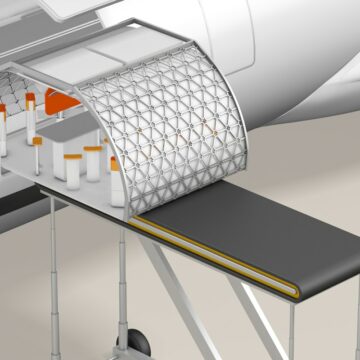Every year, millions of houses and buildings are made all over the world. In the UK alone, about 242,819 construction permits for homes were issued in 2015 and although these numbers are positive for the construction industry, it also means that there are considerable amounts of waste being produced. The construction industry in the UK produces more waste than all English households combined, equating to 24% of the total waste produced in the country. However, this situation is similar in other countries where the construction industry is responsible for big portions of the waste.
Thankfully, many people have communicated their concerns about this issue and are taking action in order to reduce the pollution caused by the industry. These efforts have led to an increase of recycling activities such as the reuse of demolition waste or the repurposing of abandoned structures. Nevertheless, there are also others that have opted for a less conventional route of recycling or decided to use non-polluting resources in their structures. Below, a list of 5 amazing constructions that were built using unconventional but eco-friendly materials.
-
- CANS: Beer Can House – Houston, USA
The construction of the Beer Can House was started in 1968 by John Milkovisch, a retired American upholsterer. He started this project by inlaying thousands of marbles, pieces of metal, and other fragments into concrete or wood in order to create unique patterns and designs, using up more than 50,000 cans for it.
John Milkovisch passed away in 1988, however, his house remains alive after it was bought out with the intention of transforming it into a local attraction at Houston. Now, the house is open for visits every Saturday and Sunday and it is very popular among visitors. It has been renovated several times as some of the weather conditions can damage the cans. As a funny anecdote, it is said that John, alongside his wife Mary and many of their friends, actually drank all the beer cans used in the original construction.

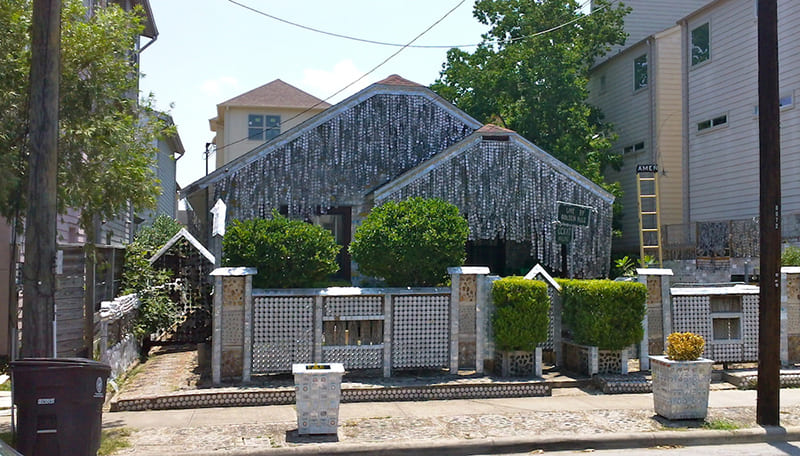

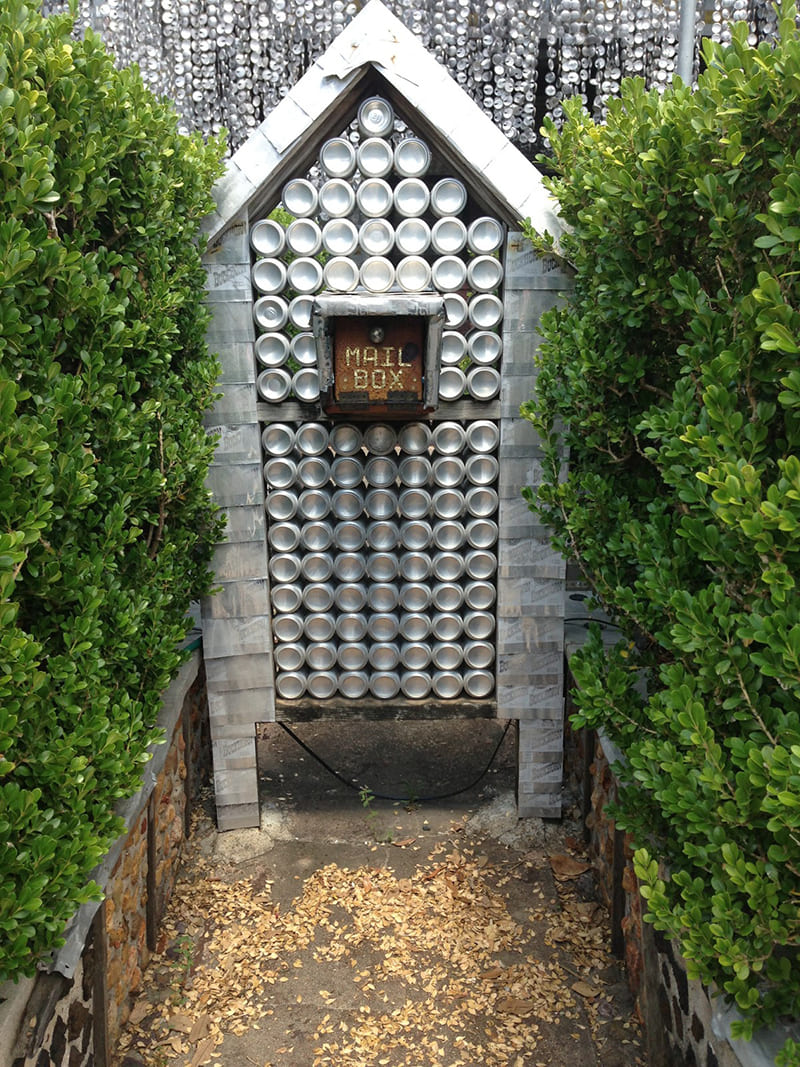
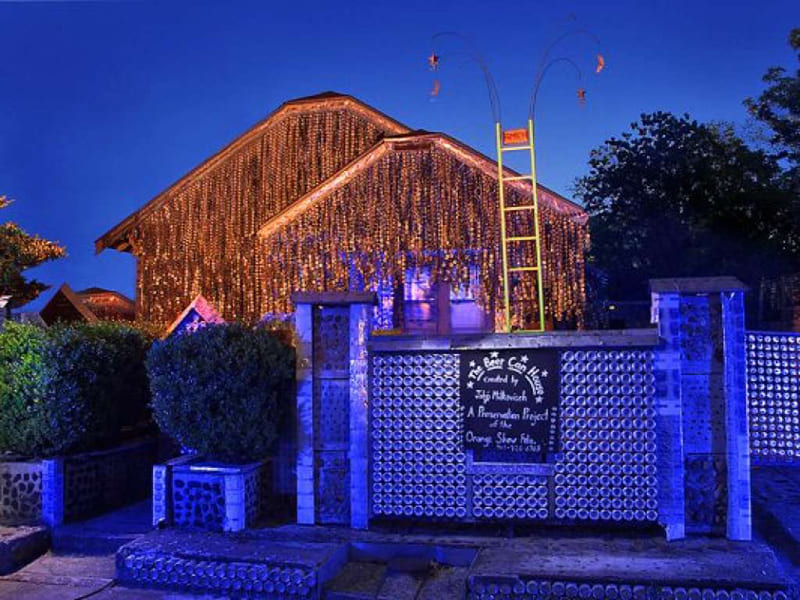
-
- CARDBOARD: Wikkelhouse– Amsterdam, The Netherlands
Recently, modular constructions have been getting more and more popular in the industry as they represent flexible and sustainable housing options for many people. This is also the approach taken by the Dutch collective Fiction Factory, who has developed a modular housing option made of cardboard.
The module is called Wikkelhouse which means Wrap House in Dutch. The structure is composed by cardboard segments, made using 24 layers of cardboard and weighting nearly 500 kilograms each, with a tubular design that allows the ability to expand or reduce the space of the house according to their customer’s wishes.
The cardboard inside the houses is protected from the weather using a waterproof film and then finished with wooden cladding. This house does not require any foundation preparation, which allows it to be fully installed in only one day, making it a great option for offices. Moreover, even though it is made of cardboard, the structure is designed to last for more than 50 years.
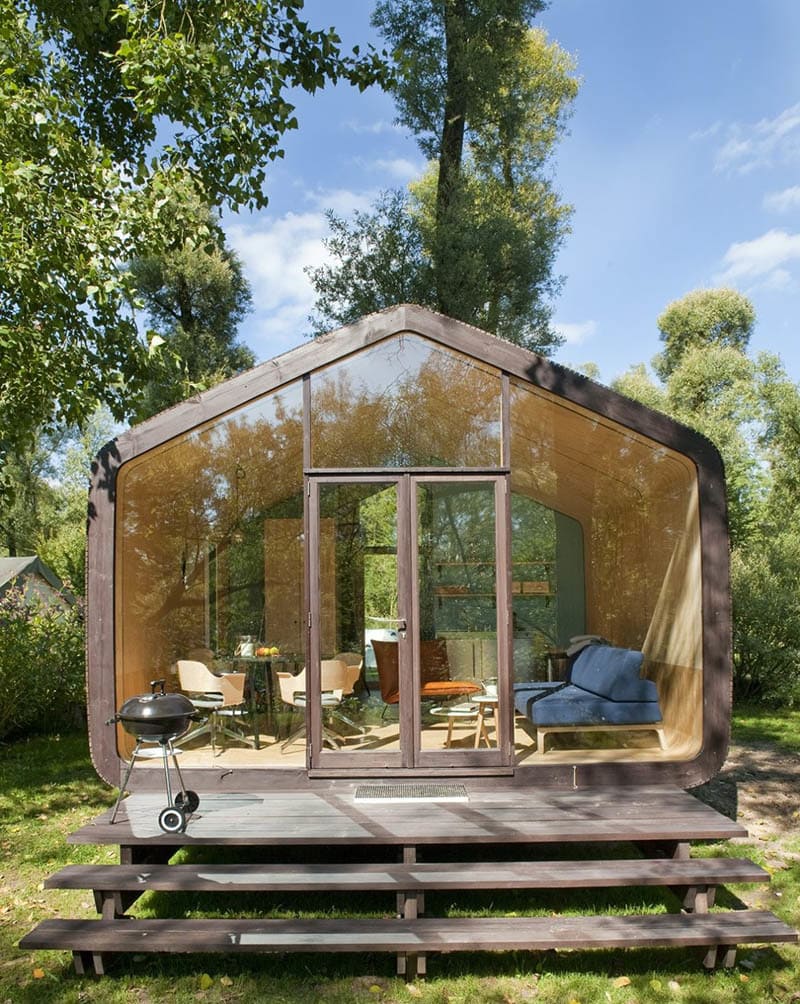

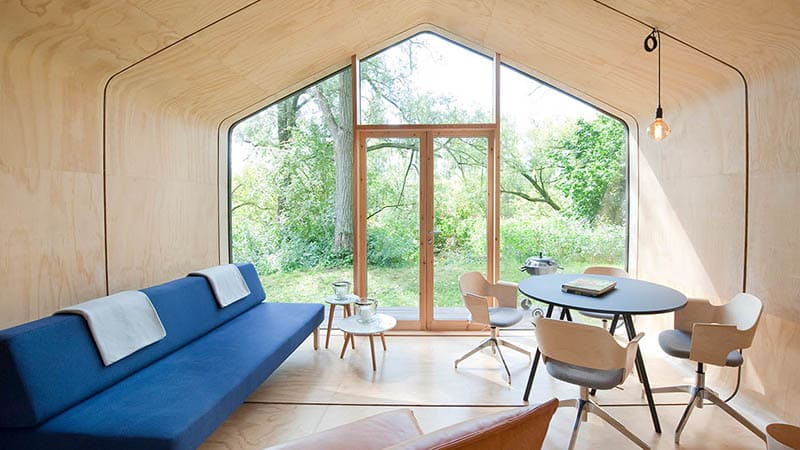

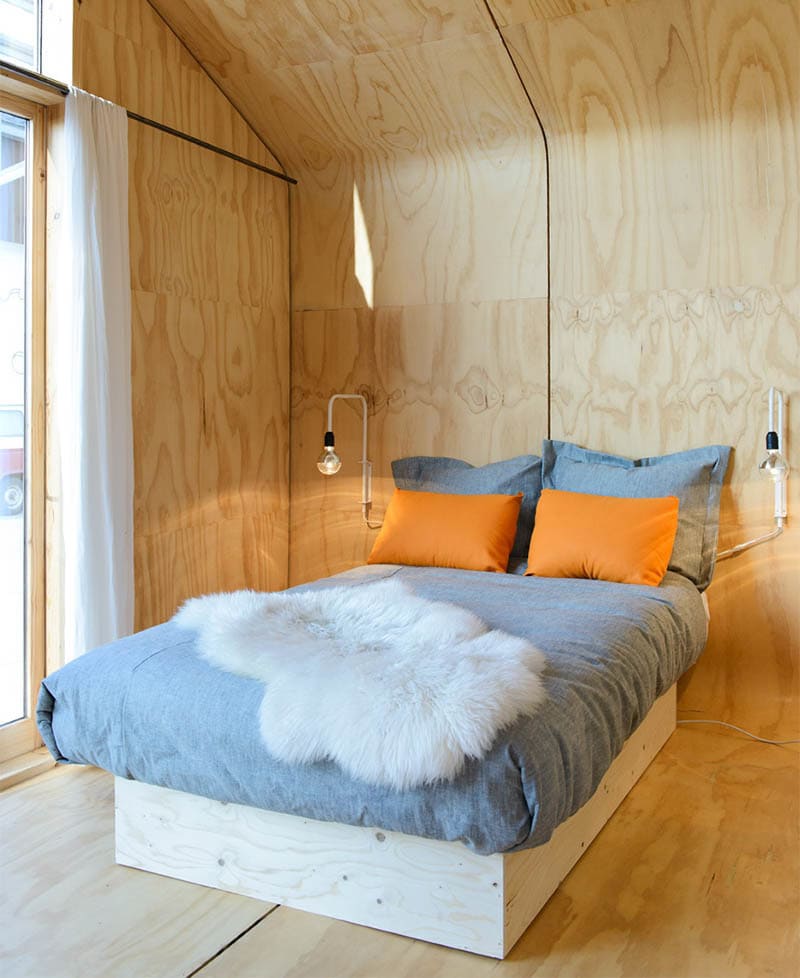
-
- BOTTLES: Wat Pa Maha Chedio Kaew Temple – Sisaket, Thailand
This incredible temple is located at almost 600 kilometers from Bangkok and it is built using 1.5 million beer bottles. This curious project started after the people in the surrounding areas saw the monks decorating the temple with bottles, then deciding to donate them some more. This became so popular than they accumulated huge amounts of recycled bottles, ultimately deciding to build a temple with them.
The temple’s nickname is “Wat Lan Kuad” which literally translates to “Temple of Million Bottles” and all the spaces in here are made using beer bottles, including the surrounding shelters, the crematorium and even the toilettes. The monks did not want anything to go to waste, using even the bottle caps into the construction and integrating them into beautiful decorative murals.
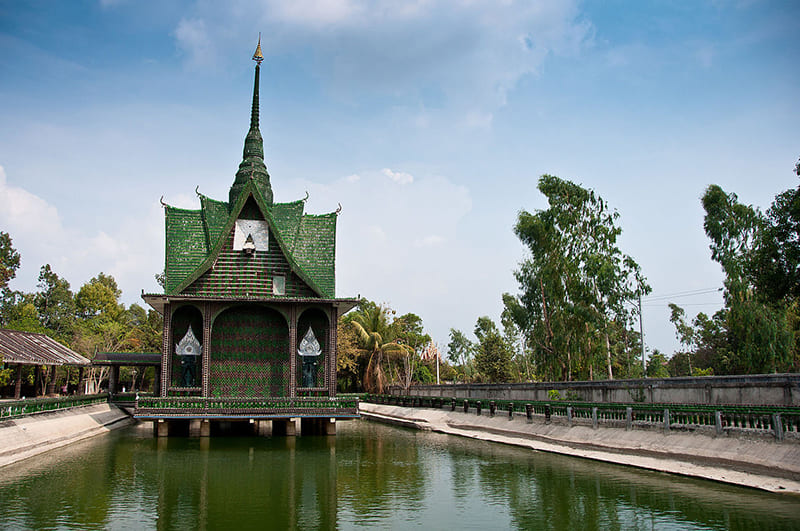
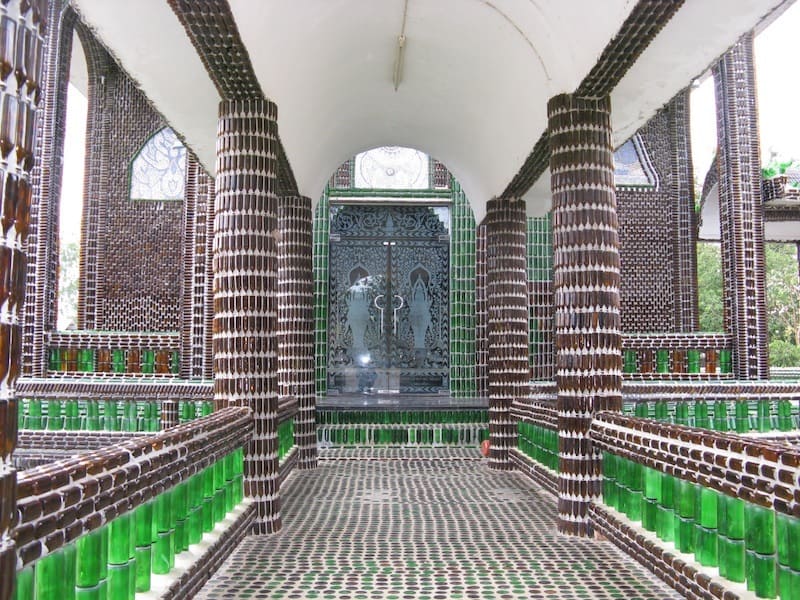
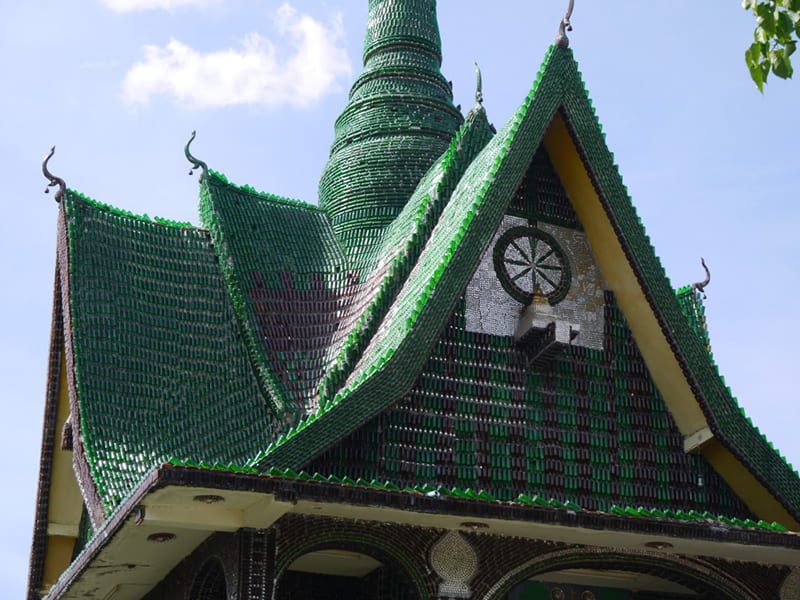

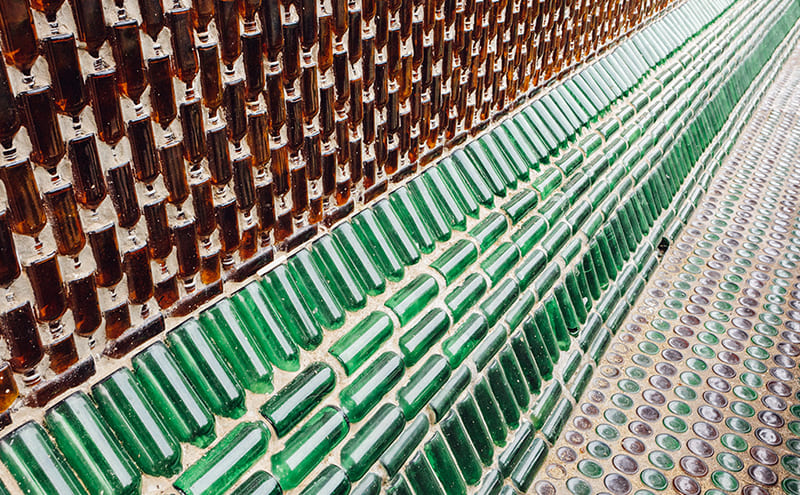
-
- SALT: Salt Palace – Uyuni, Bolivia
This incredible hotel is located at 3,650 meters above sea-level in the Eastern edge of Salar de Uyuni, Bolivia, the largest salt flat in the world, at 350 kilometers from La Paz. It is the first hotel made entirely of salt, including the chairs, tables and even beds.
Originally, it was first built in 1995, however after some years, it was dismantled and taken to its actual location. The new hotel was built back in 2007 and has been a great attraction for international and national visitors ever since. It was built using 1 million salt blocks of 35 centimeters each, used all over the structure. The hotel has many amenities and offers a great experience to its guests, nevertheless, there is one really important rule that everyone needs to follow: it is strictly forbidden to lick the structure as this can cause the deterioration of the hotel.
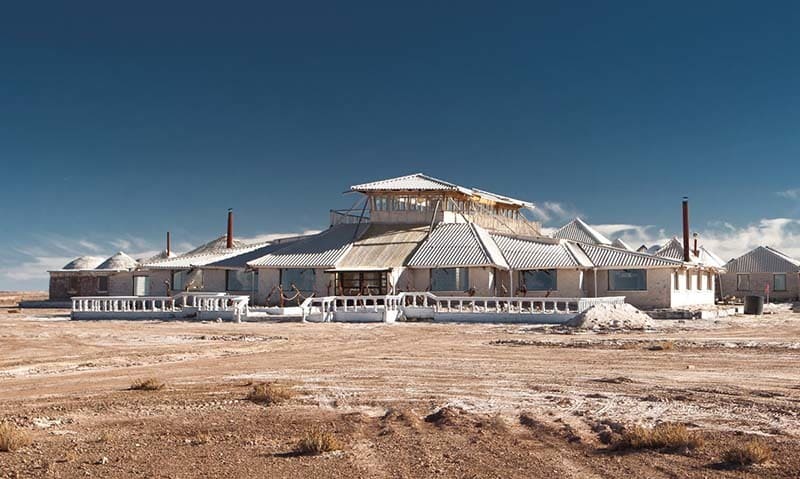
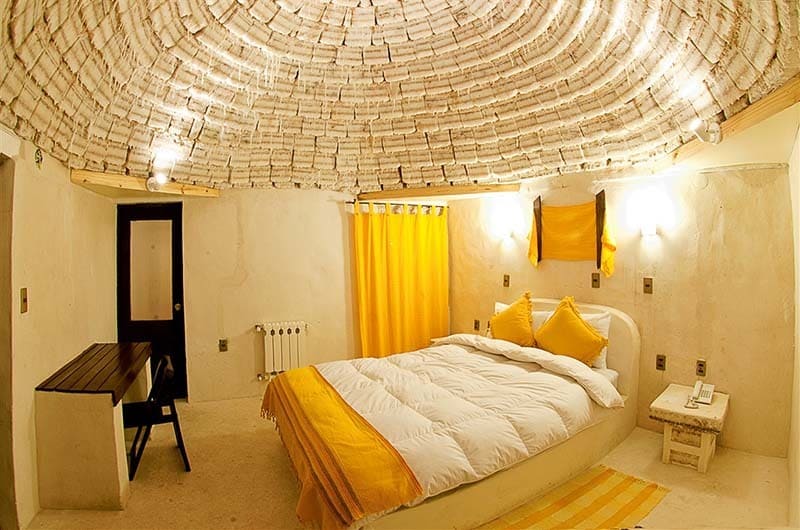
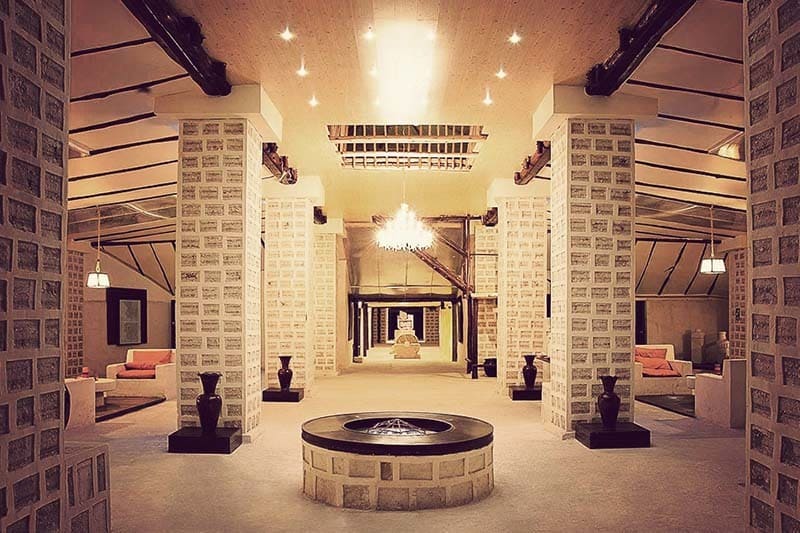
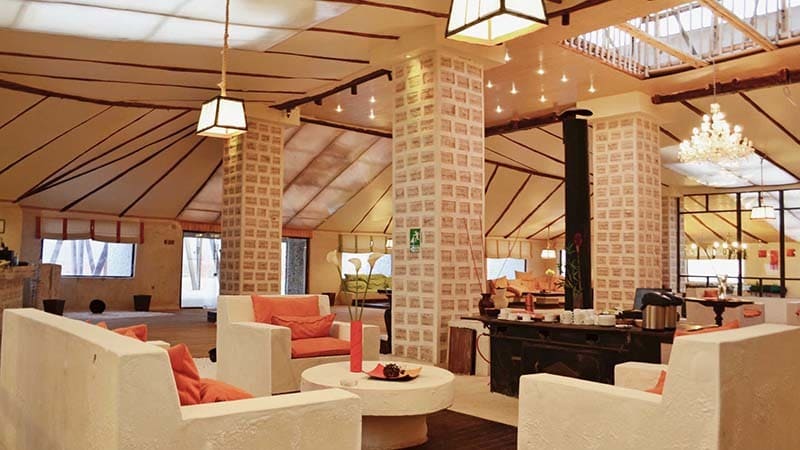

-
- ICE: Ice Hotel – Quebec, Canada
This awesome hotel is the only ice hotel in North America. It was located 5 kilometers away from the city of Quebec during its first time opening on the first of January 2001. However, it was later moved to Charlesbourg, where it has been positioned ever since.
The hotel is not a permanent construction and it is re-built every December for its inauguration in early January, where it is open for a three-month lifespan, finally being taken down every April. It has 51 double beds, a chapel, a grand hall, a big ice slide and a bar. It has arches throughout all of its structure with walls that are 1.2 meters thick. Everything in the hotel is built using ice, including the beds. The only heated spaces are the washrooms, located in a separate insulated area, and outdoor hot tubs.
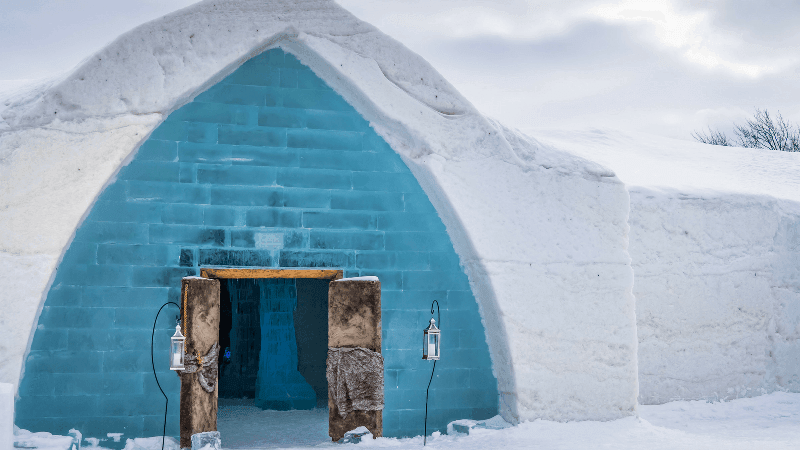


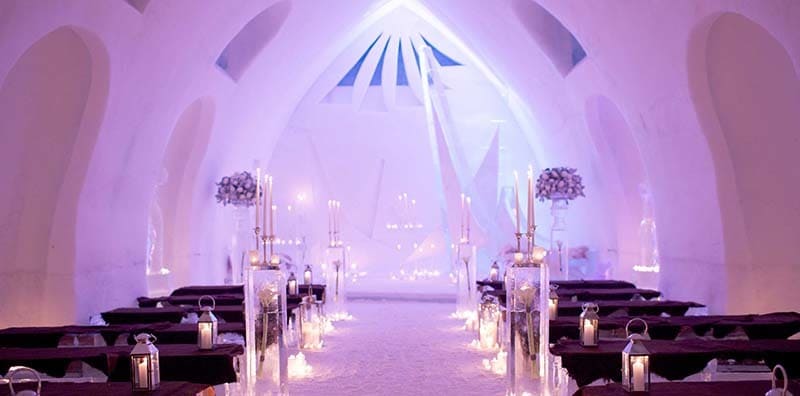
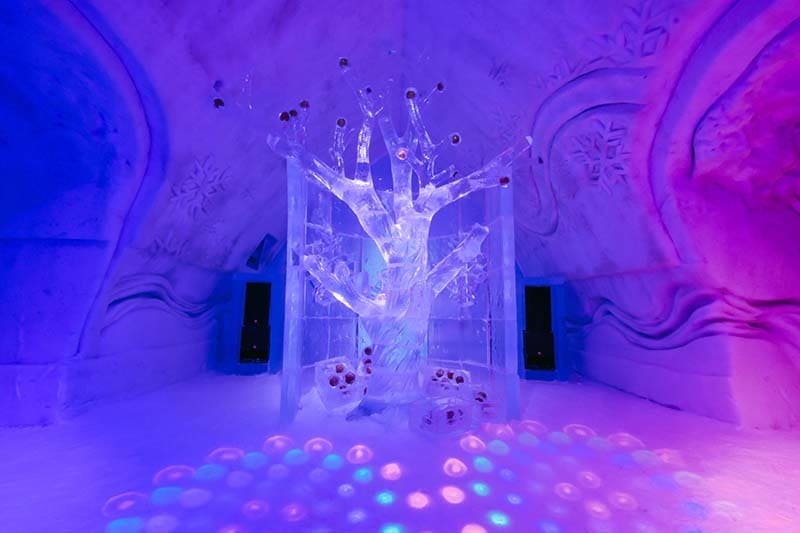
These types of constructions can be a bit odd, nevertheless, they are still remarkable. Their creators are not only inspiring other people to recycle and take better care of our planet but they are also redefining construction ideas and promoting the use of less polluting materials. Although some of these are not able to withstand weather conditions in other locations aside from where they are, they are still inspirational to others looking for less polluting options and working towards the goal of protecting the environment in the construction industry.





